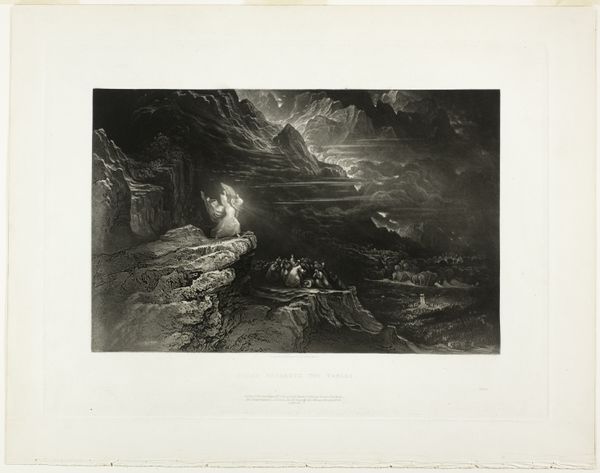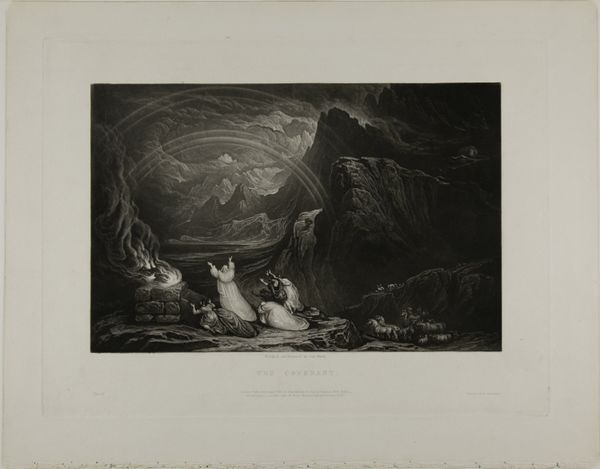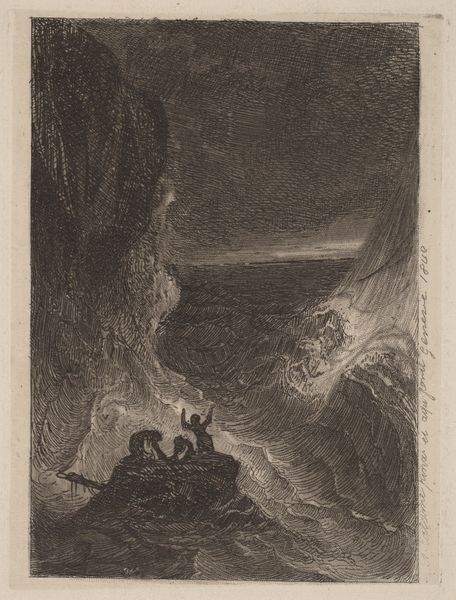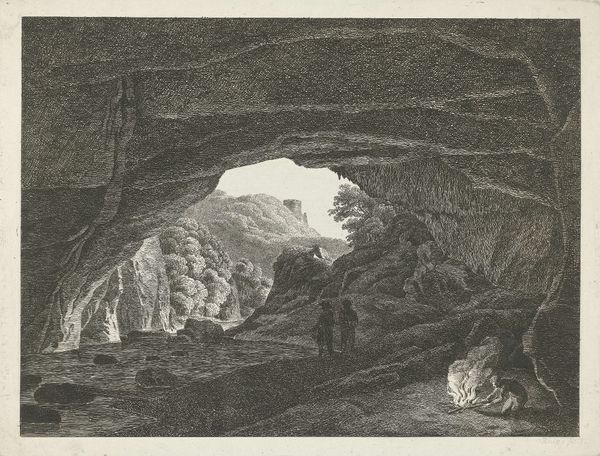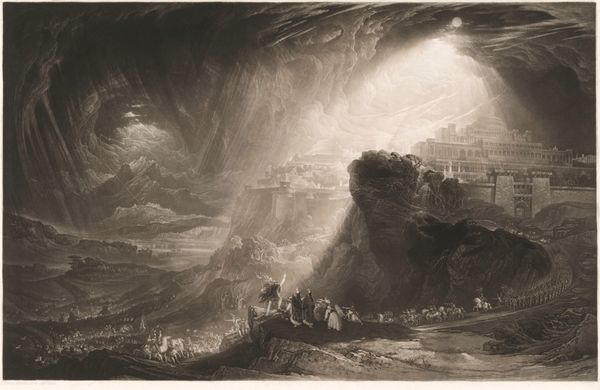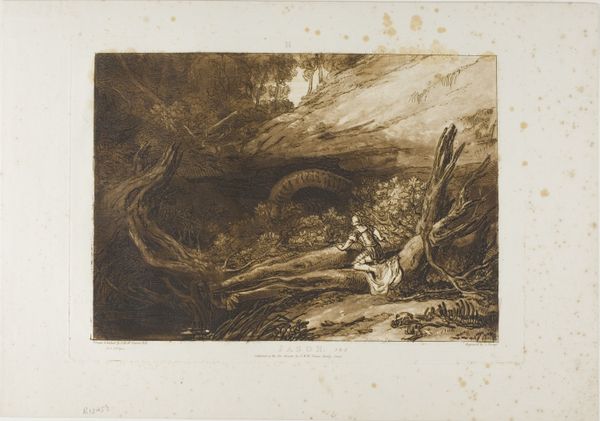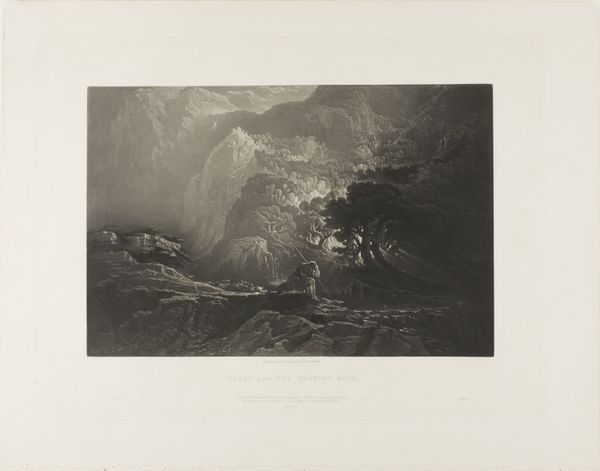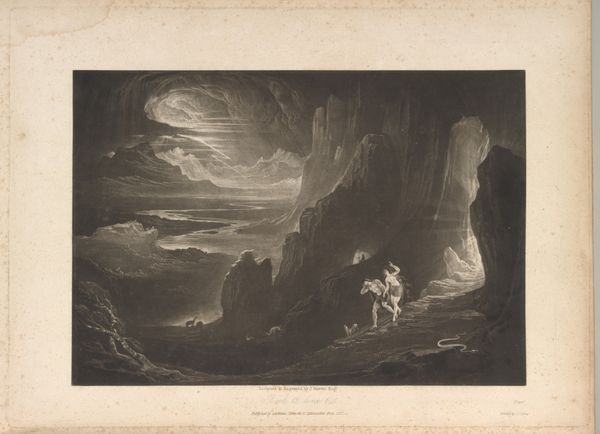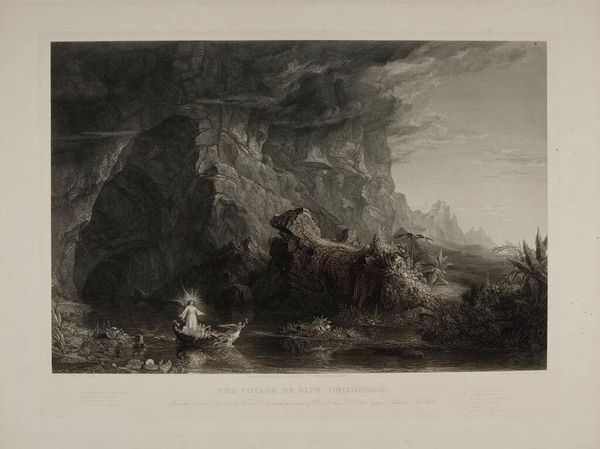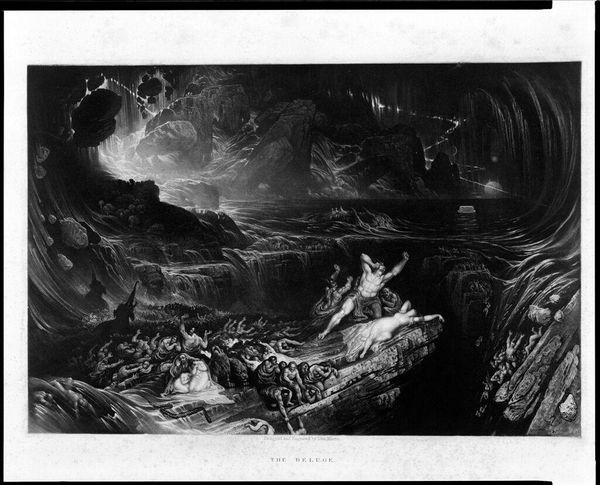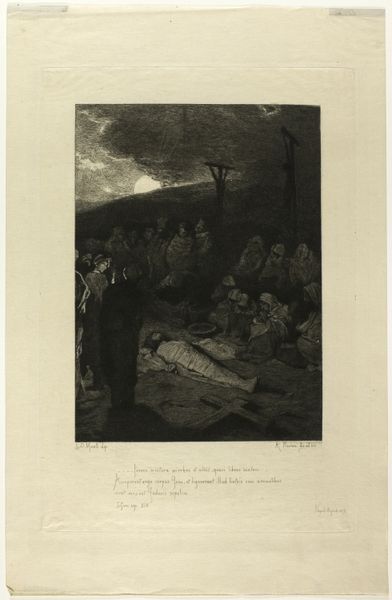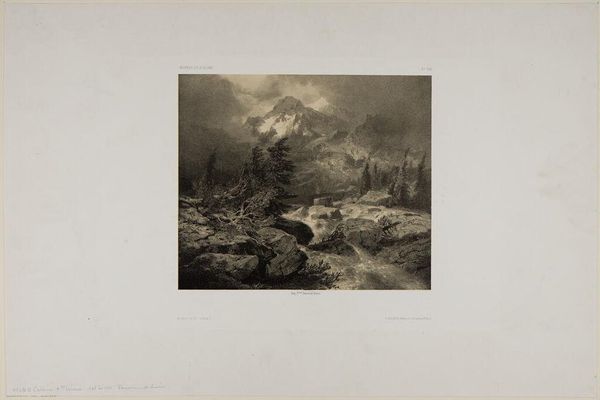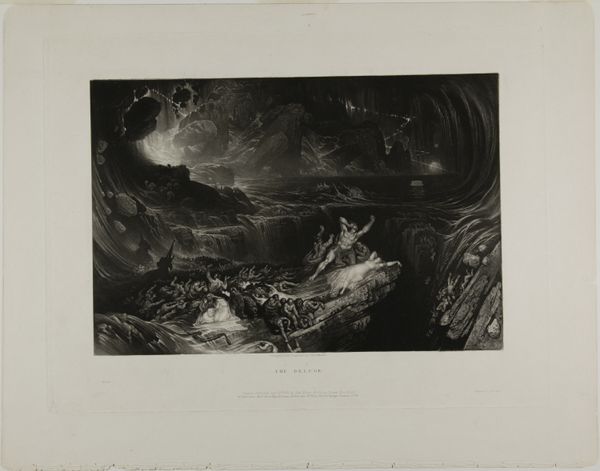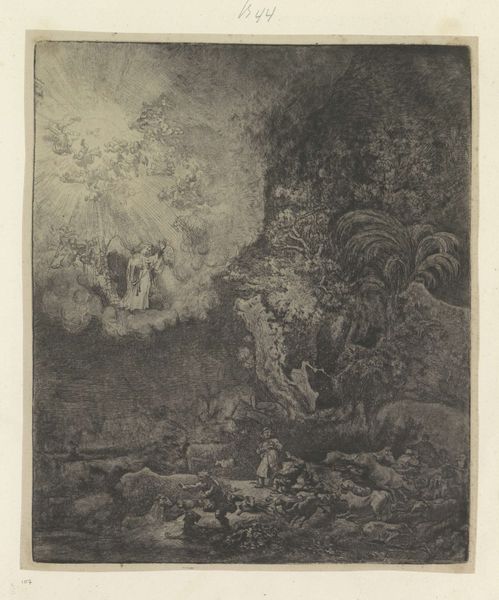
print, photography, engraving
#
narrative-art
# print
#
landscape
#
figuration
#
photography
#
romanticism
#
cityscape
#
history-painting
#
engraving
#
monochrome
Copyright: Public domain
Editor: This is John Martin's "Moses Breaketh the Tables" from 1833, rendered as an engraving. It’s quite dramatic; the light seems to emanate directly from Moses. What strikes you about this print? Curator: It's the process that fascinates me. Martin, working in monochrome, uses the material of the printing plate to create a commentary on labor and value. Consider the immense skill required to carve these minute details – it mirrors, in a way, the laborious construction of belief systems themselves. It invites reflection on how value is materially produced and destroyed; those broken tablets representing labor nullified. What does the 'breaking' signify in terms of material consequences, do you think? Editor: That's a perspective I hadn’t considered. Is it a commentary on craftsmanship, perhaps, given the religious subject matter? Curator: Precisely! Consider also the consumption of images like this. Prints made art accessible, creating a visual culture available to a broader public. This engraving democratizes the narrative while subtly commenting on its own means of production and the market forces at play. Is this religious dissemination or capitalistic opportunism expressed through Romantic drama? Editor: It makes me think about mass production and how readily available this image was. Suddenly it seems to carry more weight. Curator: And the irony, isn't it? An image decrying idolatry, rendered into a collectible object to be bought and sold. How did that initial, seemingly straightforward narrative transform for you, now that we’ve looked at its material existence? Editor: I’m seeing the print as more than just a religious scene. It's a reflection on the economic forces that shaped art and its reception.
Comments
No comments
Be the first to comment and join the conversation on the ultimate creative platform.
